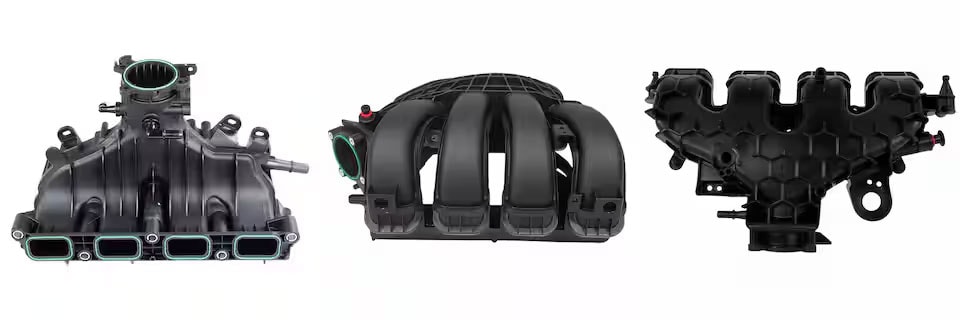How Does It Work?
Air enters the intake manifold through the throttle body, passes into a central chamber (called the plenum), and is routed to individual runners leading to each cylinder. This design maintains a balanced air-fuel ratio essential for combustion. In some cases, particularly with fuel-injected engines, fuel injectors are mounted directly onto the manifold's runners for precise mixing at each cylinder.
The Role of the Intake Manifold in Engine Efficiency
Airflow Optimization
A well-designed intake manifold ensures optimal airflow by minimizing resistance and evenly distributing air to all cylinders. This even distribution prevents issues like engine misfires or uneven power delivery. The result? Better fuel efficiency and smoother engine performance.
Heat Management
Hotter air is less dense, which can reduce engine power and efficiency. Some manifolds incorporate cooling features to prevent heat from affecting incoming airflow, ensuring more oxygen reaches each cylinder for better combustion. On newer cars, materials like plastic help reduce heat absorption compared to heavier metals like cast iron or aluminum.
Advanced Designs for Performance
Modern intake manifolds often include technologies such as resonance tuning and variable-length runners. These features adjust airflow dynamics based on engine speed, optimizing performance at both low and high RPMs. For example, longer runners improve combustion efficiency at lower speeds, while shorter runners maximize airflow for high-speed operation.
Driving with a Damaged Intake Manifold
Recognizing the Symptoms
A damaged intake manifold can cause several noticeable issues. You might experience reduced power during acceleration, unusual hissing sounds while idling, or frequent engine misfires. Coolant leaks around the manifold can also lead to overheating-a major red flag that needs attention.
Risks of Ignoring Damage
Driving with a faulty intake manifold affects efficiency and risks long-term damage to your engine. Coolant leaks can cause overheating, while air leaks disrupt the air-fuel balance necessary for smooth operation. These problems can escalate quickly if left unaddressed, leading to costly repairs or even engine replacement.
Repair and Replacement Options
Replacing or repairing an intake manifold involves removing it from the engine block, inspecting for damage, and installing new seals or components as needed. While DIY fixes might seem tempting, a professional assessment is essential to ensure proper alignment and installation. Our service department at Mtn. View Ford is well-equipped to handle such repairs efficiently.
Diagnosing a Broken Intake Manifold
Symptoms like leaking coolant, rough idling, poor fuel economy, or an illuminated "Check Engine" light often point to intake manifold problems. If you suspect an issue, bring your vehicle to our service department for comprehensive diagnostics. Our experienced technicians use advanced tools to pinpoint problems and recommend solutions tailored to your vehicle's needs. We also offer a mobile service if you can't come to us. Call 423-763-0359 to schedule that service.

